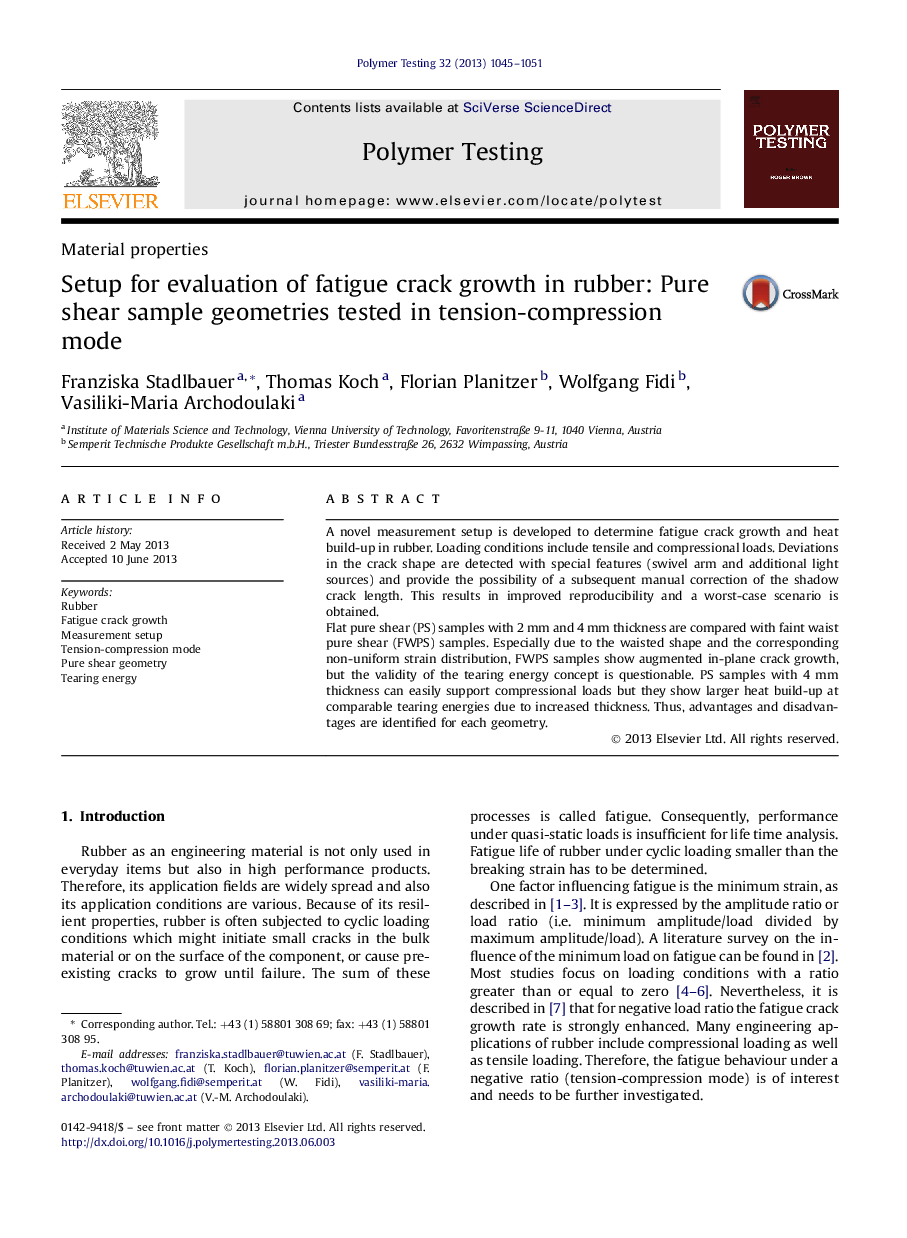| Article ID | Journal | Published Year | Pages | File Type |
|---|---|---|---|---|
| 5206635 | Polymer Testing | 2013 | 7 Pages |
A novel measurement setup is developed to determine fatigue crack growth and heat build-up in rubber. Loading conditions include tensile and compressional loads. Deviations in the crack shape are detected with special features (swivel arm and additional light sources) and provide the possibility of a subsequent manual correction of the shadow crack length. This results in improved reproducibility and a worst-case scenario is obtained.Flat pure shear (PS) samples with 2Â mm and 4Â mm thickness are compared with faint waist pure shear (FWPS) samples. Especially due to the waisted shape and the corresponding non-uniform strain distribution, FWPS samples show augmented in-plane crack growth, but the validity of the tearing energy concept is questionable. PS samples with 4Â mm thickness can easily support compressional loads but they show larger heat build-up at comparable tearing energies due to increased thickness. Thus, advantages and disadvantages are identified for each geometry.
